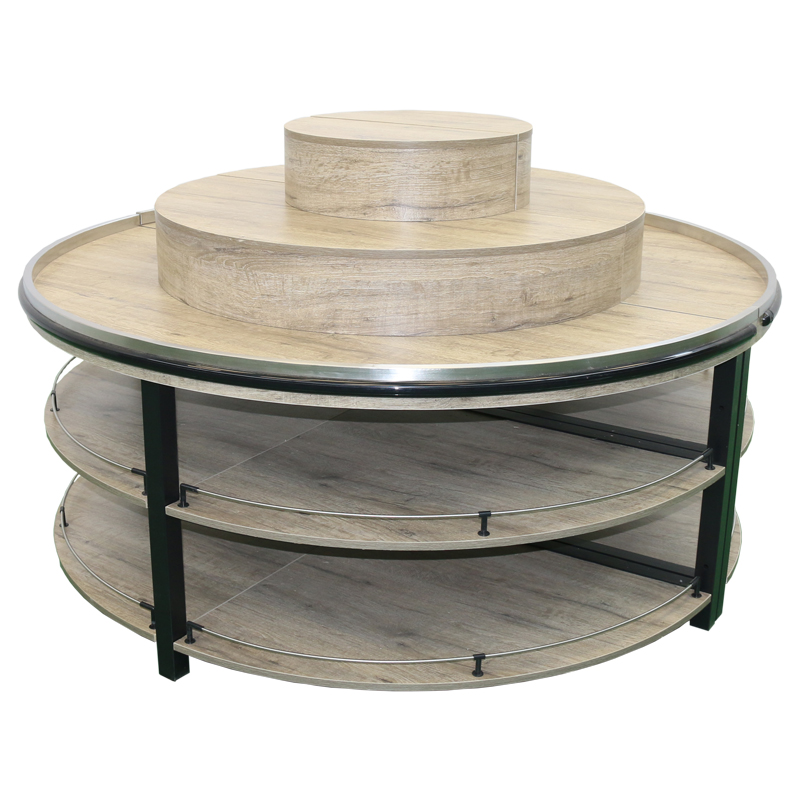
-
 National service hotline
National service hotline
- 400-082-1188
What are the material characteristics of the shelves in the weighing area
source:www.juren.top | Release time:2025年05月13日1. Metal shelves
Durable and sturdy: Made of high-quality metal materials such as steel or aluminum alloy, it has strong load-bearing capacity and can withstand heavy bulk commodities such as rice, beans, dry goods, etc. It is not easily deformed or damaged, and has a long service life.
Good stability: The structural design of metal shelves is reasonable, usually using welding or bolt connections to give them high stability, making them less prone to shaking or tipping, and ensuring the safety of product display.
Corrosion resistance: After surface treatment such as painting, galvanizing, etc., metal shelves have good corrosion resistance and can resist the erosion of humid environments and some chemicals, making them suitable for various storage environments.
Easy to clean: The metal surface is smooth and not easy to absorb dust and stains. It can be easily cleaned by wiping with a damp cloth, keeping the shelves clean and hygienic, meeting the hygiene requirements of food sales venues.
Good transparency: Some metal shelves adopt grid or hollow design, with good air circulation, which is conducive to ventilation and moisture prevention of bulk goods, and also convenient for customers to view products.
2. Wooden shelves
Environmentally friendly and natural: Wood materials are usually derived from natural wood, giving people a sense of environmental protection and nature. When paired with food and other products in the weighing area, they can create a warm and comfortable shopping atmosphere, enhancing customers' shopping experience.
Good texture: Wood has a unique texture and feel, making the shelves look elegant and suitable for displaying some good bulk goods, such as imported food, specialty dry goods, etc., which can enhance the grade and attractiveness of the products.
High safety: Compared to metal shelves, wooden shelves have rounded corners that are less likely to cause harm to customers, especially in shopping environments with a large number of children, where safety is higher.
Strong customizability: Wood is easy to process and can be cut, carved, and spliced according to different design needs to create shelves in various shapes and styles, meeting the decoration and display requirements of different stores.
Strong moisture absorption: Wood has a certain degree of moisture absorption and can regulate the humidity of the surrounding environment. It has a certain protective effect on bulk commodities that have certain humidity requirements, such as tea and traditional Chinese medicine. However, this also means that wooden shelves need to pay attention to moisture prevention, otherwise they are prone to moisture deformation and mold.
3. Plastic shelves
Lightweight: Plastic shelves are lightweight and easy to transport and install, making them more convenient and efficient for bulk areas that require frequent layout adjustments or moving of shelves.
Colorful: Plastic shelves can be made into various colors by adding different pigments. Merchants can choose the appropriate color according to the overall style and product characteristics of the store, so that the shelves can coordinate with the surrounding environment and play a role in beautifying the display.
Affordable price: Compared to metal and wooden shelves, plastic shelves have lower costs and relatively cheaper prices, making them a cost-effective choice for some businesses with limited budgets.
Wear resistance: Plastic has good wear resistance and is not easily scratched or worn by bulk goods, which can keep the appearance of the shelves clean and intact.
Waterproof and moisture-proof: Plastic itself has waterproof and moisture-proof properties, and will not rust or rot due to contact with moisture. It is suitable for placement in high humidity environments, such as fresh food areas or near water sources. However, the load-bearing capacity of plastic shelves is relatively weak, and they are generally suitable for displaying lighter bulk goods such as candies, snacks, etc.
Prev:
No more
Next:
What is the function of a cash register

 Micro signal:
Micro signal:


 official account
official account
 applet
applet
 wechat
wechat
 contact
contact
 phone
phone